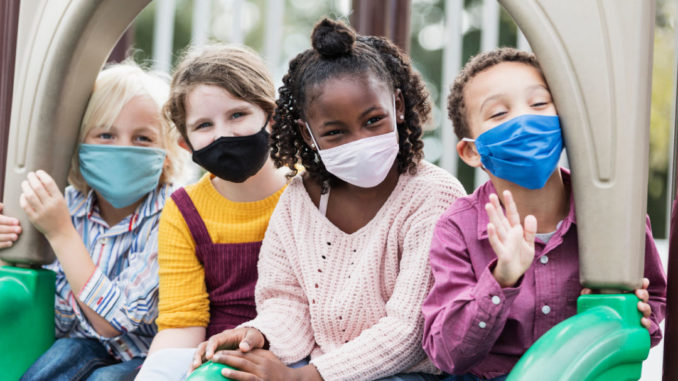
By Larry Magid
This post first appeared in the Mercury News
It’s been a big week when it comes to resources for promoting wellness and helping protect children online. Instagram announced that it will now prevent adults from sending messages to people under 18 who don’t follow them and will send safety notices encouraging teens to be cautious in conversations with adults they’re already connected to. The company also released an extensive new parents guide (tinyurl.com/igparents) in partnership with The Child Mind Institute and my nonprofit, ConnectSafely.org.
Not to be undone, Google has launched an information portal for families with resources from Common Sense Media, Family Online Safety Institute, PBS Kids, Sesame Workshop, Headspace and ConnectSafely. The extensive information source (families.google) begins by answering questions that parents ask Google such as “how much screen time is too much for my kid?” and “when should I get my kid a phone?”
To learn more about healthy use of technology, Boston Children’s Hospital, on Thursday, launched its Digital Wellness Lab.
In the meantime, Common Sense Media, the California Health Care Foundation, and Hopelab released the results of a study about how young people used digital media to cope with COVID-19.
The study looked at issues surrounding mental health and social media comparing data from 2018 to the fall of 2020 and found that nearly four in 10 teens and young adults (38%) now report symptoms of moderate to severe depression, up from 25% two years ago, and that depression is much higher among young people who report a coronavirus infection in their family (51%) than among those not directly affected by the coronavirus (36%).
The study found that “those with depression are twice as likely to say social media is “very” important for getting support or advice than they were two years ago (26% vs. 11% in 2018). Exposure to hate speech is also on the rise. About one in four 14- to 22-year-olds said they “often” encounter body shaming (29%), racist (27%), sexist (26%), or homophobic (23%) comments on social media.
LGBTQ+ teens and young adults are especially at risk. The majority of LGBTQ+ youth (74%) “encounter homophobic content online and on social media, and 65% report symptoms of moderate to severe depression, twice the percentage of non-LGBTQ+ youth.”
There are social media paradoxes that I think many of us experience, including young people. In a video interview, the study’s author, Vicky Rideout, quoted a 16-year-old boy who said “social media connects me to the world, but then the world’s problems seem like my own.”
There is some good news, including evidence that teens are using social media to stay connected and get advice and support during the pandemic.
The Common Sense Media study adds to a growing body of research on the impact of digital media on wellness, but there is plenty more to learn, which is why Boston Children’s Hospital, on Thursday, launched its Digital Wellness Lab “to be a central hub where research findings can be aggregated, translated into practical recommendations, and shared, not just in health care, but among the major teaching, technology and entertainment platforms where children are spending the majority of their waking hours.”
Help for parents and other adults who work with children
Collectively, these resources will help parents and guardians as well as educators, grandparents and others with information they need to help guide their children through the worlds of technology, social media and entertainment.
As regular readers of this column know, I’ve been involved with internet safety issues since the ’90s when I wrote my first booklet and launched my first websites on this subject, but I’ve never seen the launch of this many resources in a single week.
It’s probably no coincidence that this is happening about a year into the COVID-19 pandemic when nearly everyone — including children and teens — are spending an increasing amount of time online. Some of that time is in remote learning, but we’ve also seen a huge increase in social media, online video watching and the creative use of social media such as creating videos for YouTube, Instagram, TikTok and Snapchat. And it’s not just kids who are going online and, in some cases, running into trouble. We’ve also seen a rise in cyber scams, many of which try to take advantage of our COVID-related concerns. The World Health Organization issued a warning that “Hackers and cyber scammers are taking advantage of the coronavirus disease (COVID-19) pandemic by sending fraudulent email and WhatsApp messages that attempt to trick you into clicking on malicious links or opening attachments.”
Boston Children’s Hospital pediatrician Michael Rich, founder of the Digital Wellness Lab and associate professor of pediatrics at Harvard Medical School, said in a video interview that “instead of talking about internet safety, we should be talking about internet mastery, that we should be talking not about the internet as an unsafe place that we need to play defense against, but a place that we need to master.” The lab is “bringing together experts from technology, public health, neuroscience, entertainment, psychology policy-making and other disciplines to “produce and sustain a continuous stream of science-based information focused on the digital wellness of individuals and society.
Rich used a food analogy to explain his philosophy about kids and media saying that, as a pediatrician, “we will not tell you never eat a Big Mac, we will tell you the difference between eating broccoli and a Big Mac.” It’s not a matter of all or nothing but one of balance. Several years ago, Rich was among those who urged the American Academy of Pediatricians to revise its screen use recommendations to focus less on arbitrary time limits and more on maintaining a healthy tech/life balance based on age and maturity as well as the type of content being consumed.
You can find video interviews and links to all the resources listed in this column at ConnectSafely.org/BigWeek.